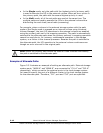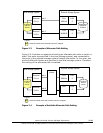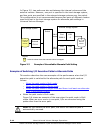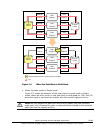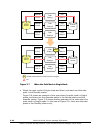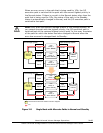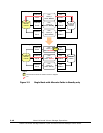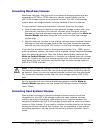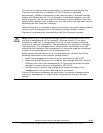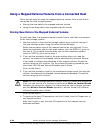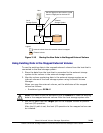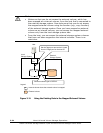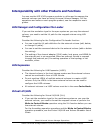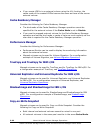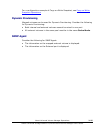
2-20 About Universal Volume Manager Operations
Hitachi Universal Storage Platform V/VM Universal Volume Manager User’s Guide
OPEN-V emulation is recommended because, in most cases, OPEN-V
emulation provides the most efficient use of storage and the best performance.
Also, emulation types other than OPEN-V may not retain existing data after
being mapped.
Choosing Mapping Policy
Policy is a list of settings of the necessary information for mapping the
external volume. By setting the mapping policy in advance, the setting at the
time of mapping will be easier.
One policy is prepared in advance. The user can change the default value of
the policy.
Difference between Automatic Mapping and Manual Mapping
When you map the external volume, you need to configure:
• cross-subsystem paths
• external volume parameters
• LDEV number to LDEVs in the external volume
• SSID (storage subsystem ID)
When you perform automatic mapping, users configure only cross-subsystem
paths and all the other settings above are automatically made by Universal
Volume Manager according to the mapping policy. When you perform manual
mapping, users configure all the settings.
Automatic mapping maps all the external volume found by the Volume
Discovery to the internal volumes. Automatic mapping requires less settings
but you are not allowed to set different parameters to each external volume or
to specify LDEV number to each LDEV. You can set the parameters such as
emulation type to mapping policy in advance.
Port Discovery and Volume Discovery
Port Discovery and Volume Discovery are the processes to find external
volumes, and will be executed when you map external volumes or when you
add cross-subsystem paths.
Port Discovery is a process to search for and get information about target
ports of the connected external storage system from an external port of the
local storage system. The latest information about the external storage system
can be viewed in a dialog box of the Universal Volume Manager when you
execute Port Discovery.



